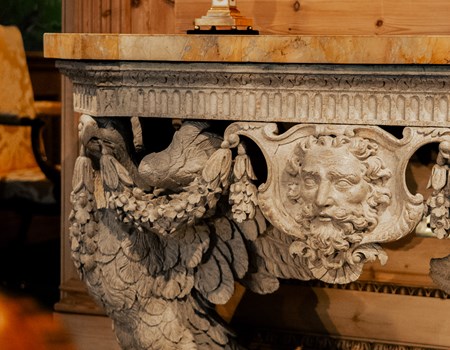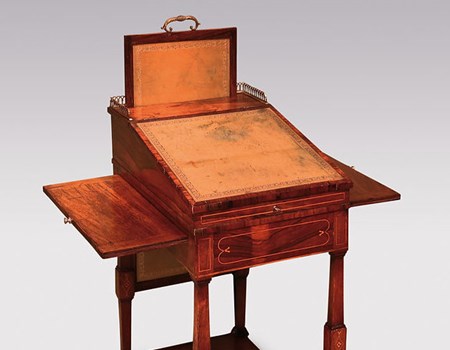Where Photography Stands Now?
Where Photography Stands Now?
Photography, as the youngest of all major art forms, is paradoxically the one that has most profoundly reshaped the entire history of art. When it first appeared in the nineteenth century, photography liberated painting from the burden of representation and gave rise to artistic movements that would have been unthinkable without it, such as Impressionism, Symbolism, and later, Abstraction. Beyond documentation, photography laid the foundation for digital and moving-image arts, becoming the starting point for cinema, video, and contemporary multimedia installations. Having worked for several years in the French art market, I have come to understand that France holds a special affection for photography. Paris Photo, founded in 1997, is one of the earliest and now the most influential photography fairs in the world. It has established the international standard that photography can stand alongside painting and sculpture as a fully recognized collectable art form. Each November, Paris transforms into a citywide celebration of photography, from galleries and museums to independent spaces. In October, during Art Basel Paris, immediately following London’s autumn art season, the city becomes immersed in a parallel celebration of contemporary art in all its forms. These months saturate the European art scene and set the tone for the following season globally.
©HiroshiSugimoto_T638987371318269827.png)
Boden Sea, Uttwil (1993) © Hiroshi Sugimoto
At Art Basel Paris, photography has been taking an increasingly visible and respected position. This year, while many galleries chose to play it safe with blue-chip names, there was a notable presence of photographic works. Kandis Williams’s exhibition at Galerie Heidi, JR at Perrotin, Linder at Andréhn‑Schiptjenko and Hiroshi Sugimoto at Lisson Gallery all presented different ways of engaging with the photographic image. Several leading American galleries, such as 47 Canal, Document, Tanya Bonakdar, Marian Goodman, and Paula Cooper, also showcased artists who treat photography as both subject and concept. Masters and emerging photographers appeared side by side, showing that photography now speaks fluently within the broader language of contemporary art.
©KandisWilliams_T638987370658297311.png) Candombe Africano via Jitterbug to Virginia Georgia Mississippi Bouquet (2020) © Kandis Williams
Candombe Africano via Jitterbug to Virginia Georgia Mississippi Bouquet (2020) © Kandis WilliamsYet the energy of Paris Photo remains distinct. The fair is entirely devoted to photography in all its forms, from fine art prints to photobooks, film, and digital experimentation. I still recall the 2024 edition, when filmmaker Jim Jarmusch gave an inspiring talk about the dialogue between still and moving images. Across the city, numerous satellite events explored the intersections of photography, film, and installation. Artists such as Thomas Devaux from Galerie Bacqueville, who merges photography with painting and installation, Yang Yongliang from Paris-B, who combines traditional Chinese landscape aesthetics with digital cityscapes, Sun Yanchu from Zeto Art, who uses photo chemical materials in painterly compositions, and Laurent Lafolie from Galerie Binome, who transforms photographs into laser engraved reliefs to address ecological issues, all demonstrate how photography continues to reinvent its boundaries.
©YangYongliang_CourtesyParis-B_T638987373831549769.jpg)
Sleepless Wonderland (2012) © Yang Yongliang | Courtesy Paris-B
From Paris to New York, from London to Shanghai, Amsterdam to Milan, the rise of photography-dedicated fairs reflects a growing global awareness. Photography has become not merely a medium, but a language through which artists from different cultures and backgrounds reinterpret the world. Just as it once revolutionised the history of painting, photography today reshapes the future of art. It expands across disciplines, inspires new forms, and continues to evolve in a spiral movement, offering us ever more fascinating ways of seeing and understanding our time.
 READ MORE
READ MORE
Design or Collectable Comfort?
 READ MORE
READ MORE
The Dutch Eye: Inside the Legacy of Kunstgalerij Albricht
 READ MORE
READ MORE
From the V&A to the Fair: Dr. Jin Gao’s Digital Perspective on Art
 READ MORE
READ MORE
Authenticity on Trial: The Story Behind Long-Sharp Gallery
 READ MORE
READ MORE
The Refuel Café: A Creative Collaboration with Firmdale
 READ MORE
READ MORE
Can a Rock be a Work of Art? Inside the legacy of Stone gallery
 READ MORE
READ MORE
Contrasting Perspectives on the Islamic Arts Biennale 2025
 READ MORE
READ MORE
Four Decades in the Antique Furniture World
 READ MORE
READ MORE
Pioneering the Vintage Omega Market
 READ MORE
READ MORE
A Journey Through Japanese and Indian Art
 READ MORE
READ MORE
 READ MORE
READ MORE
Tax Changes: The Budget's Impact on the Art World
 READ MORE
READ MORE
 READ MORE
READ MORE
Dora Carrington: Beyond Bloomsbury
 READ MORE
READ MORE
Flaws as Insight: The perfection of imperfection in art
 READ MORE
READ MORE
 READ MORE
READ MORE
Q&A with Dara Huang: Architect, Designer and Entrepreneur
 READ MORE
READ MORE
An interview with Catherine Milner: The Fair Tour Guide
 READ MORE
READ MORE
 READ MORE
READ MORE
 READ MORE
READ MORE
I Will Rise: The Rise of the Female Sculptor
 READ MORE
READ MORE
 READ MORE
READ MORE
 READ MORE
READ MORE
 READ MORE
READ MORE
 READ MORE
READ MORE
 READ MORE
READ MORE
 READ MORE
READ MORE
 READ MORE
READ MORE
 READ MORE
READ MORE
 READ MORE
READ MORE
 READ MORE
READ MORE
 READ MORE
READ MORE
The Ladybird Book, Wikipedia in Technicolour
 READ MORE
READ MORE
 READ MORE
READ MORE
 READ MORE
READ MORE
 READ MORE
READ MORE
 READ MORE
READ MORE
 READ MORE
READ MORE
Beneath the Surface - the Power of Infrared Imaging
 READ MORE
READ MORE
 READ MORE
READ MORE
 READ MORE
READ MORE
The Cult of the 21st Century First Edition
 READ MORE
READ MORE
 READ MORE
READ MORE
 READ MORE
READ MORE
Where the Value of Silver Lies
 READ MORE
READ MORE
 READ MORE
READ MORE
Design or Collectable Comfort?
 READ MORE
READ MORE
The Dutch Eye: Inside the Legacy of Kunstgalerij Albricht
 READ MORE
READ MORE
Authenticity on Trial: The Story Behind Long-Sharp Gallery
 READ MORE
READ MORE
The Refuel Café: A Creative Collaboration with Firmdale
 READ MORE
READ MORE
AtKris Studio: A Living Dialogue Between Past and Future Design
 READ MORE
READ MORE
Four Decades in the Antique Furniture World
 READ MORE
READ MORE
Reviving Arts and Crafts for a New Generation
 READ MORE
READ MORE
Between the Earth and the Divine
 READ MORE
READ MORE
 READ MORE
READ MORE
The Art of Ingenious Table Furniture
 READ MORE
READ MORE
 READ MORE
READ MORE
 READ MORE
READ MORE
 READ MORE
READ MORE
 READ MORE
READ MORE
 READ MORE
READ MORE
 READ MORE
READ MORE
 READ MORE
READ MORE
 READ MORE
READ MORE
American Craft in collectors' hearts
 READ MORE
READ MORE
 READ MORE
READ MORE
 READ MORE
READ MORE
 READ MORE
READ MORE
 READ MORE
READ MORE
 READ MORE
READ MORE
 READ MORE
READ MORE
 READ MORE
READ MORE
 READ MORE
READ MORE
 READ MORE
READ MORE
Are Brooches Becoming the New Tiaras?
 READ MORE
READ MORE
Pioneering the Vintage Omega Market
 READ MORE
READ MORE
The Power of Pink: Why we can’t shake the eternal allure of pink diamonds
 READ MORE
READ MORE
Katherine Purcell Invites Us Inside Wartski
 READ MORE
READ MORE
 READ MORE
READ MORE
 READ MORE
READ MORE
 READ MORE
READ MORE
 READ MORE
READ MORE
Where the Value of Silver Lies
 READ MORE
READ MORE
 READ MORE
READ MORE
 READ MORE
READ MORE
A Journey Through Japanese and Indian Art
 READ MORE
READ MORE
 READ MORE
READ MORE
 READ MORE
READ MORE
 READ MORE
READ MORE
 READ MORE
READ MORE
 READ MORE
READ MORE
 READ MORE
READ MORE
 READ MORE
READ MORE
 READ MORE
READ MORE
 READ MORE
READ MORE
 READ MORE
READ MORE
 READ MORE
READ MORE
 READ MORE
READ MORE
 READ MORE
READ MORE
 READ MORE
READ MORE
 READ MORE
READ MORE
 READ MORE
READ MORE
 READ MORE
READ MORE
 READ MORE
READ MORE
 READ MORE
READ MORE
 READ MORE
READ MORE
 READ MORE
READ MORE
 READ MORE
READ MORE
Q&A: A Lighthouse Called Kanata
 READ MORE
READ MORE
 READ MORE
READ MORE
Dora Carrington: Beyond Bloomsbury
 READ MORE
READ MORE
 READ MORE
READ MORE
 READ MORE
READ MORE
 READ MORE
READ MORE
Contemporary Chinese Ink Paintings
 READ MORE
READ MORE
 READ MORE
READ MORE
 READ MORE
READ MORE
 READ MORE
READ MORE
Beneath the Surface - the Power of Infrared Imaging
 READ MORE
READ MORE
 READ MORE
READ MORE
 READ MORE
READ MORE
 READ MORE
READ MORE
 READ MORE
READ MORE












































































































